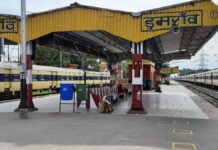The National Capital Region Transport Corporation (NCRTC) is embarking on a significant green initiative for the Ghaziabad-Meerut Regional Rapid Transit System (RRTS) corridor, demonstrating a strong commitment to environmental sustainability. This ambitious project involves the planting of 250,000 trees along the corridor, with the aim of not only enhancing the natural beauty of the area but also mitigating the environmental impact of the transportation infrastructure.
NCRTC’s initiative is part of a broader vision to integrate sustainable practices into modern transportation systems. By planting a diverse range of indigenous flora, including trees, shrubs, and flowering plants, NCRTC seeks to reduce carbon emissions, improve air quality, and create vibrant green spaces that benefit both commuters and local residents.
The Ghaziabad-Meerut RRTS corridor, once operational, is expected to revolutionise regional connectivity, significantly reducing travel time between the two cities and relieving congestion on existing road networks. However, NCRTC recognizes the importance of balancing progress with environmental stewardship. Therefore, the corporation is prioritising the integration of green spaces into the corridor’s design to ensure a sustainable and ecologically responsible approach to infrastructure development.
Beyond the environmental benefits, the plantation drive holds significant socio-economic importance. It is expected to generate employment opportunities and foster community engagement through local participation in tree planting initiatives. Additionally, the introduction of greenery along the corridor will enhance its aesthetic appeal, transforming the urban landscape into a visually pleasing and ecologically rich environment.
Overall, NCRTC’s green initiative underscores its dedication to sustainable development and highlights the pivotal role of public transportation in shaping a greener, more liveable future for urban areas. As NCRTC continues to advance its green agenda, it is setting a commendable example for other transit authorities to follow, reaffirming the importance of environmental conservation in infrastructure planning.





